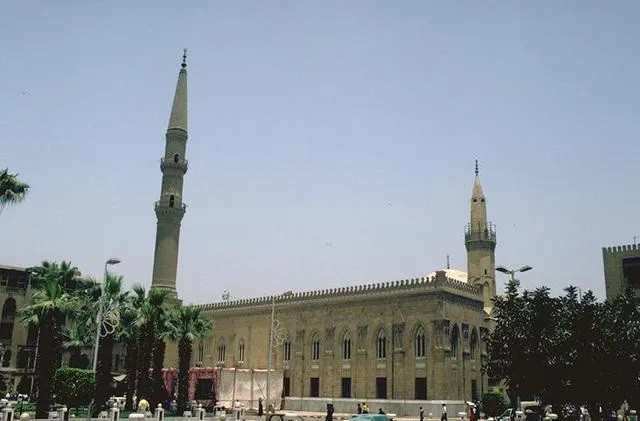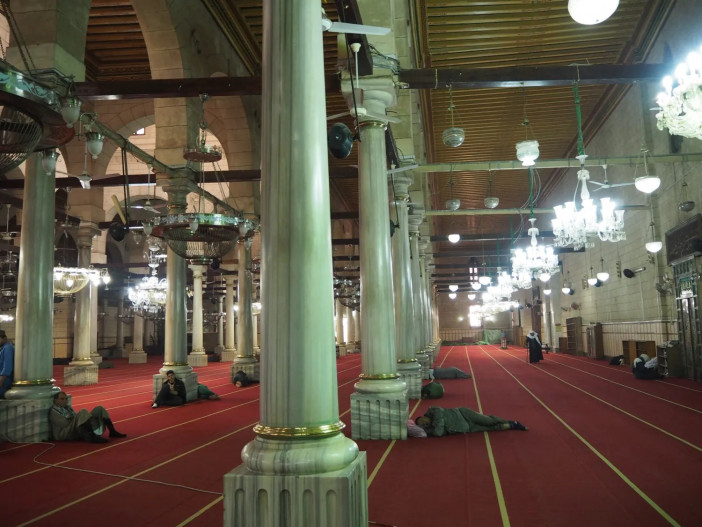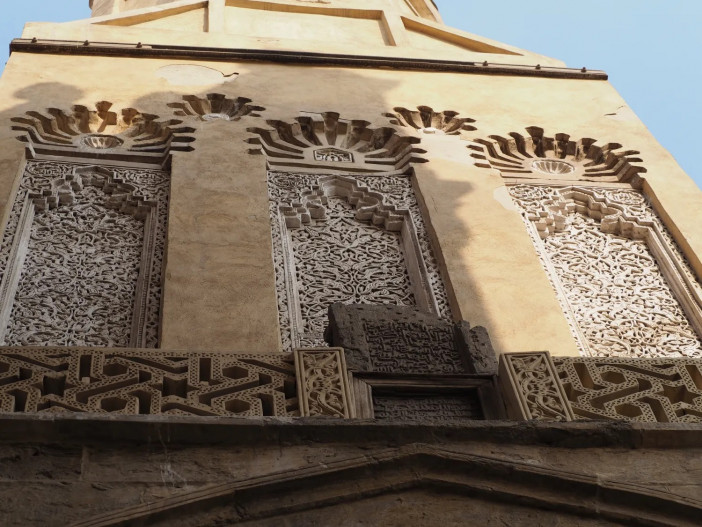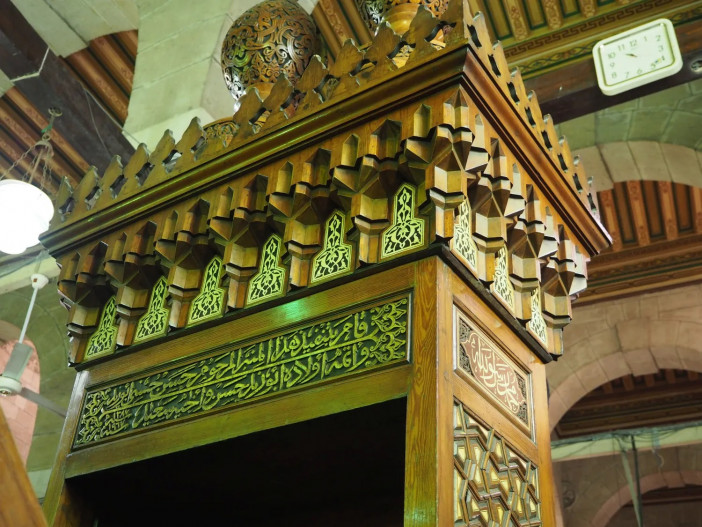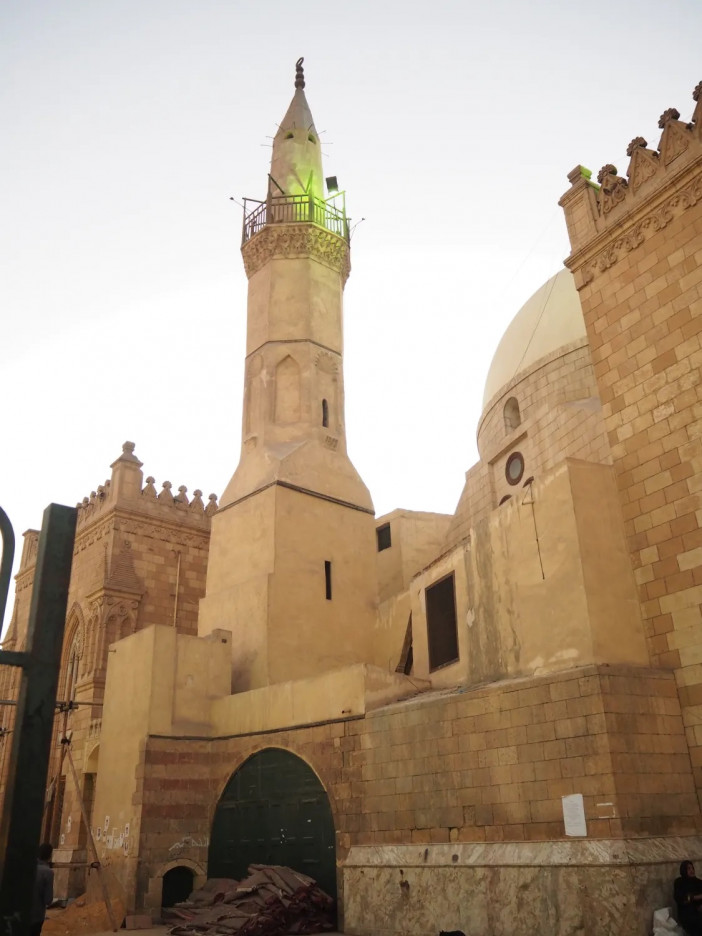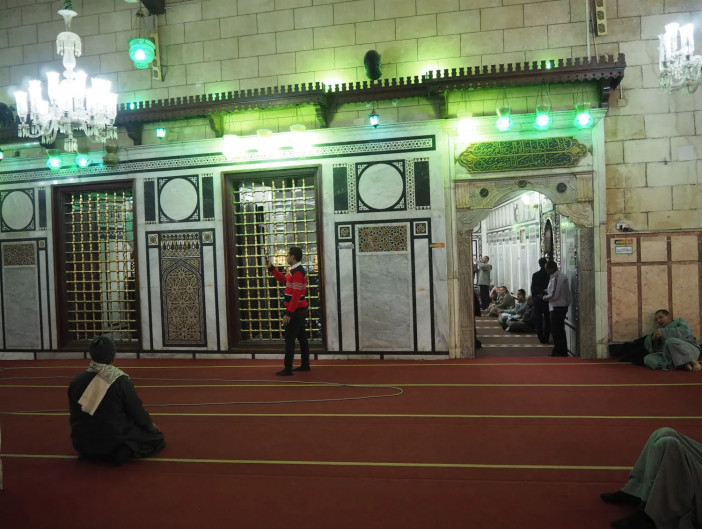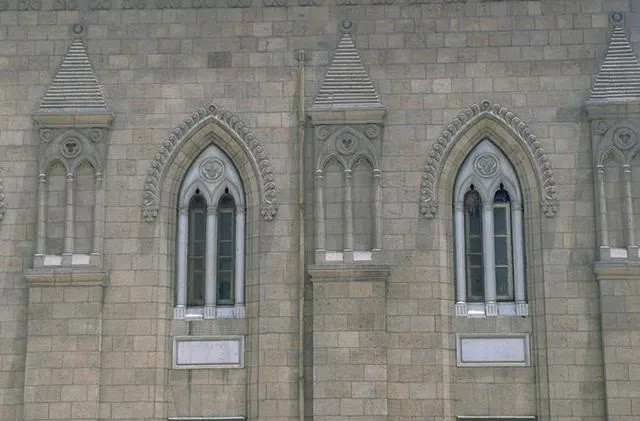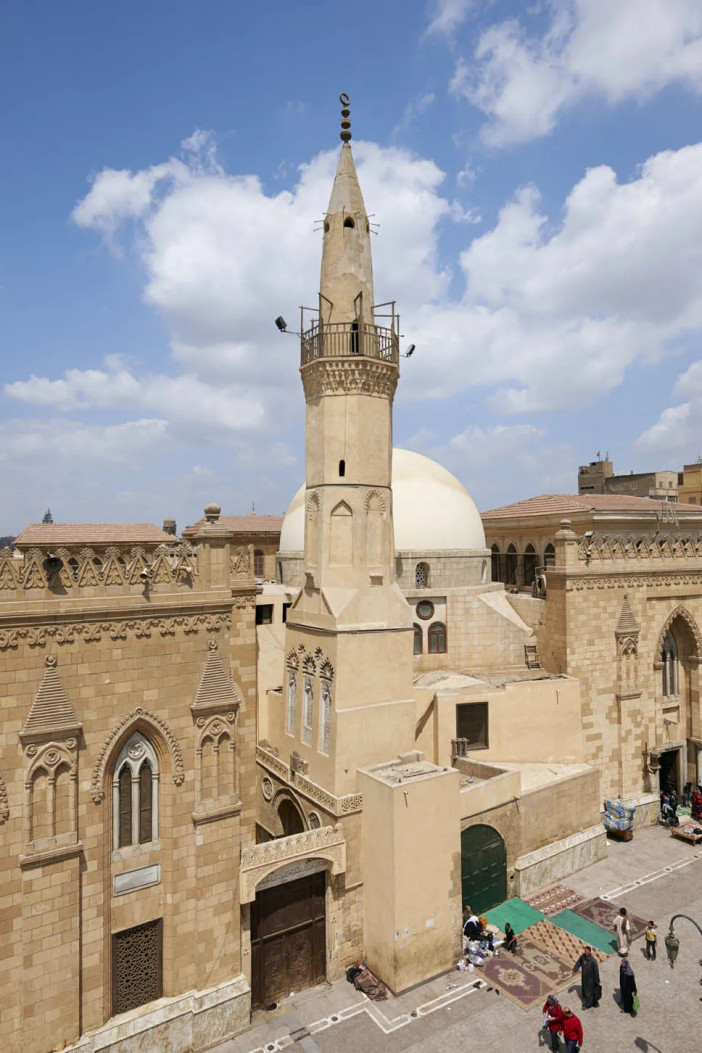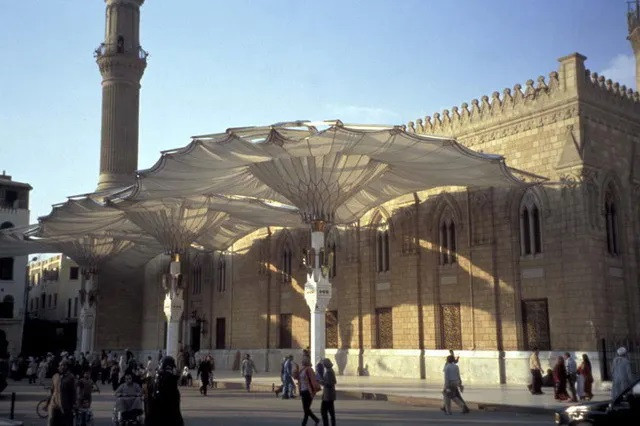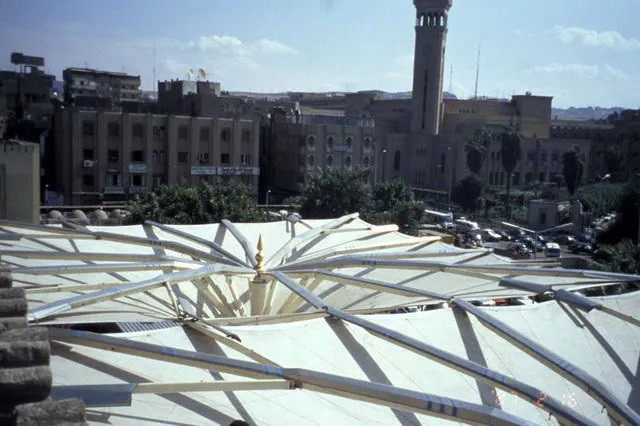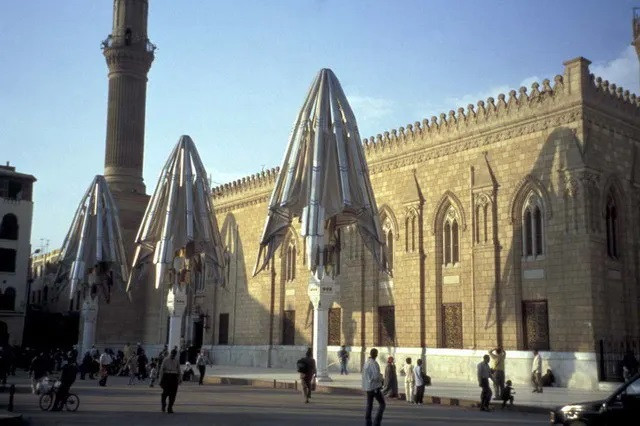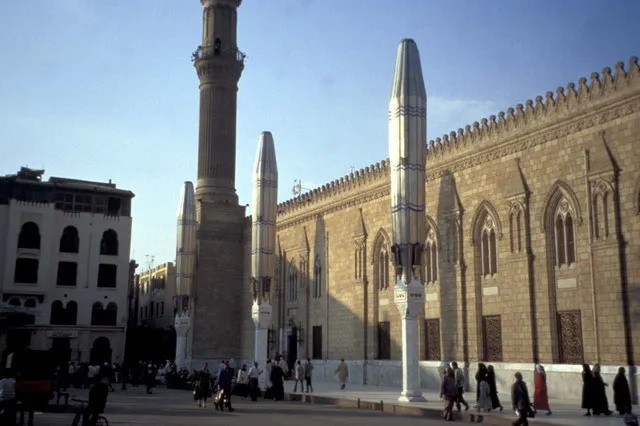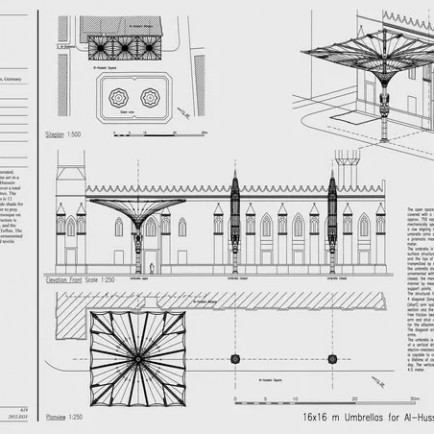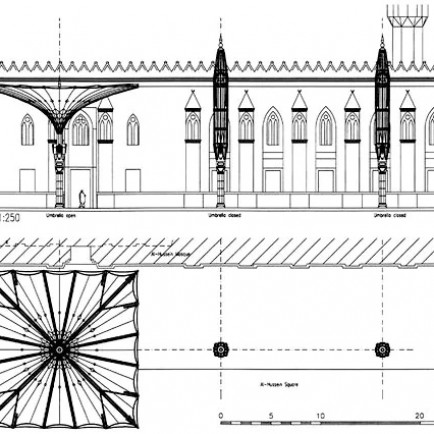Al-Husayn Mosque
History
The Imam Hussein Mosque, also known as Jame Sayyidna Husayn, is a mosque and Husayn ibn Ali's mausoleum that was initially constructed in 1154 and then rebuilt in 1874. [1] The mosque is situated in the Al-Hussain neighborhood of Cairo, Egypt, close to the Khan El-Khalili Bazaar and the renowned Al Azhar Mosque. It is regarded as one of Egypt's holiest Islamic sites. Some Shia Muslims think Husayn's head (ra's mubarak) is interred on the mosque's grounds, where a mausoleum currently stands and is regarded as what remains of the Fatimid architecture in the structure.
Urban and Architectural
In 1154, the mausoleum's construction was finished. Only the lowest portion of the Bab Al-Akhdar, or south side gate, known as the original Fatimid building, is still present in the mosque today. Ayyubid Salih Nagm al-Din erected a minaret to the old Fatimid doorway a few years later, in 1237. Arabesque motifs, which are common in Islamic architecture, are carved into the panels of the minaret.
The multiple minarets in this mosque represent the various rulers of Cairo and the ways in which they cemented their control through construction. Al-Hussein mosque was finally rebuilt in 1874 by Isma'il Pasha (Khedive Isma'il) using Gothic Revival architecture as inspiration. Isma'il Pasha built a mosque with Ottoman-style minarets and Italian Gothic-style spires in an effort to improve Cairo. Islamic eclecticism refers to the blending of many architectural styles that made Islamic architecture during the khedival era famous.
Description
Today, three sizable canopy canopies have been added to Al-Hussein Mosque. It was included to shield those who offered their prayers outside from the summer sun and the winter rain. They are mechanically operated and are built in the same style as many steel and teflon-covered mosques in Saudi Arabia. There are still a lot of individuals who regularly go to this mosque to pray and visit the mausoleum. Tourists can still see the building from the outside even though non-Muslims are not permitted inside.
When opened, a row of three mechanically powered square umbrellas in front of Sayidna Hussein Mosque covers a space of 750 square meters. The umbrellas, which are 12 meters tall, offer shade to those who assemble to pray outside in front of the mosque on the square. The membrane is constructed of Teflon, and the steel framework has been coated and galvanized. The membrane has colored textile bands sewed on that are embellished in portions.
References
https://www.archnet.org/sites/1543
https://www.archnet.org/sites/5155
https://en.wikipedia.org/wiki/Al-Hussein_Mosque#Architecture
Details
Location
Al-Hussein Mosque, Hasan El-Adawy, El-Gamaleya, El Gamaliya, Cairo Governorate 4331330, Egypt
Worshippers
2875
Owners
Isma'il Pasha
Architect Name
Year of Build
Original:1154 Reconstructed:1874 Canopies added : 2000
Area
5000 covered, 5750 with canopies
Drawings
Map
History
The Imam Hussein Mosque, also known as Jame Sayyidna Husayn, is a mosque and Husayn ibn Ali's mausoleum that was initially constructed in 1154 and then rebuilt in 1874. [1] The mosque is situated in the Al-Hussain neighborhood of Cairo, Egypt, close to the Khan El-Khalili Bazaar and the renowned Al Azhar Mosque. It is regarded as one of Egypt's holiest Islamic sites. Some Shia Muslims think Husayn's head (ra's mubarak) is interred on the mosque's grounds, where a mausoleum currently stands and is regarded as what remains of the Fatimid architecture in the structure.
Urban and Architectural
In 1154, the mausoleum's construction was finished. Only the lowest portion of the Bab Al-Akhdar, or south side gate, known as the original Fatimid building, is still present in the mosque today. Ayyubid Salih Nagm al-Din erected a minaret to the old Fatimid doorway a few years later, in 1237. Arabesque motifs, which are common in Islamic architecture, are carved into the panels of the minaret.
The multiple minarets in this mosque represent the various rulers of Cairo and the ways in which they cemented their control through construction. Al-Hussein mosque was finally rebuilt in 1874 by Isma'il Pasha (Khedive Isma'il) using Gothic Revival architecture as inspiration. Isma'il Pasha built a mosque with Ottoman-style minarets and Italian Gothic-style spires in an effort to improve Cairo. Islamic eclecticism refers to the blending of many architectural styles that made Islamic architecture during the khedival era famous.
Description
Today, three sizable canopy canopies have been added to Al-Hussein Mosque. It was included to shield those who offered their prayers outside from the summer sun and the winter rain. They are mechanically operated and are built in the same style as many steel and teflon-covered mosques in Saudi Arabia. There are still a lot of individuals who regularly go to this mosque to pray and visit the mausoleum. Tourists can still see the building from the outside even though non-Muslims are not permitted inside.
When opened, a row of three mechanically powered square umbrellas in front of Sayidna Hussein Mosque covers a space of 750 square meters. The umbrellas, which are 12 meters tall, offer shade to those who assemble to pray outside in front of the mosque on the square. The membrane is constructed of Teflon, and the steel framework has been coated and galvanized. The membrane has colored textile bands sewed on that are embellished in portions.


